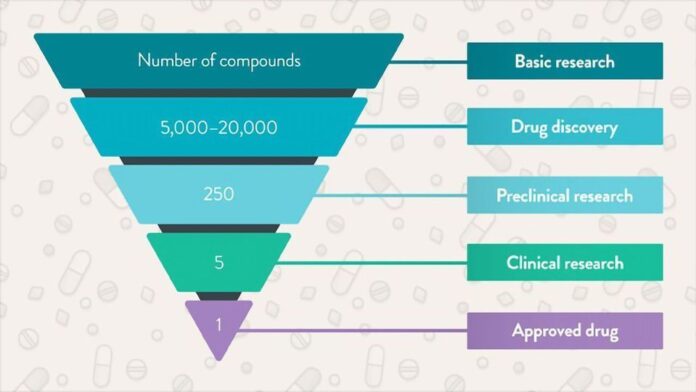What You Need to Know About Industry Sponsored Research ?
University-industry collaboration is an important aspect of research and often involves a triple-helix relationship between industry, government and academia.
It’s vital to maintain a balance between scientific freedom and industry influence. This means universities and scientific journals must protect emerging researchers, and all academics must fend off industry influence. In this article, we will discuss every point of Which of The Following is True Regarding Industry Sponsored Research ?
Also Read: spacex jobs brownsville tx
1. It’s a good way to get a quick lay of the land
One of the key aspects of success in business is having a solid handle on what you’re trying to accomplish and how things work. It’s akin to knowing your way around a new city or an unfamiliar school system. In the case of industry sponsored research, having a firm understanding of what to expect will make your job much easier.
For many academic researchers, industry sponsored research is a gateway into early R&D partnerships that bridge the gap between scientific discovery and commercial products or services. This is often a result of direct outreach from industry sponsors to academic investigators whose expertise and work they believe will help solve a specific problem for the company.
These projects can be milestone-driven, with an initial, agreed-upon portion of the project funding provided up front to begin the research. Additional funds will be provided to the research team once the defined goals or timelines are achieved. If the goals are not met, industry sponsors may choose to end their contract.
Another key advantage of industry-sponsored research is that the results are typically disseminated through publication. In this manner, industry sponsors can maintain their financial interest in the research and gain an increased level of credibility for the product or technology. This can be especially helpful to industry in a highly competitive global market, where investors are looking for proof that the product or technology has potential.
In addition, the resulting intellectual property from these sponsored projects can be used for commercial development. For example, a researcher may grant a sponsor a first option to license the intellectual property developed in the course of the research. The cost and royalty rates are typically negotiated at the time of licensing.
2. It’s a good way to get data and analysis
For many researchers, industry sponsored research is an ideal way to get the data and analysis needed to turn a great idea into a winning product or service. This type of research is typically milestone-driven and requires a high degree of collaboration and communication between the research team and their industry partners to ensure that the resulting product or service meets their needs and expectations.
In addition to the many benefits that industry sponsored research can offer, there are also a few major downsides that researchers need to be aware of. Among these is the risk of conducting research that may have been skewed by an industry sponsor in order to promote a particular product or service. Fortunately, there are a number of ways that universities can mitigate this risk, including identifying and removing those researchers from their research teams who may be pursuing industry funded projects. Other ways in which you can reduce your risks include establishing an industry liaison with whom you can communicate about your project from the start and ensuring that your project adheres to all relevant university policies, guidelines and regulations.
3. It’s a good way to mitigate risks around major decisions
Developing a solid plan for mitigating risks around major decisions is essential to ensuring that a project stays on track. It can help keep the entire team on the same page and ensure that everyone understands where the project stands and what their responsibilities are. It can also help prevent operational surprises and make sure that the right people are on board to handle a problem that might come up.
Before you can develop a risk mitigation plan, however, you need to determine what types of risks you might face. These can include compliance, legal, or financial risks. Each of these can have a different effect on your business and affect how you manage them.
For example, compliance risks can mean that you violate external or internal laws, regulations, or standards that could harm your reputation or finances. They could also lead to a loss of customer trust or a fine. These can be very costly to your business, so it’s important to identify these risks and put a plan in place to mitigate them.
In addition, legal risks can cause a company to face expensive lawsuits that could impact their reputation or business in the long run. They could also cause a loss of customers or fees, so it’s important to take steps to minimize these risks as much as possible.
While some of these risks can be easily prevented, others are more difficult to address and may reoccur. These high-impact, low-probability risks often require long-term effort on the part of a team of project directors to mitigate them.
For instance, one of the most common risks facing a pharmaceutical company is the failure of their CRO to provide clinical data that is acceptable quality for the FDA (Baguley 2016). If the FDA rejects the NDA because of poor quality data, the sponsor company will have to repeat the research and pay out more money to the CRO. This can add significant time and cost to the drug development process, which will delay the launch of a product.
To avoid these problems, industry-sponsored research projects should be carefully designed to meet the needs of both the company and the academic researcher. It’s important to create a project plan, budget, and timeline that allows the industry sponsor to be confident in their investment and that the research is on the right track. This will allow them to redeploy their funding to projects that are more likely to result in a positive outcome.
4. It’s a good way to get a competitive edge
A company that has a strong competitive advantage can gain a market share and increase its profits through superior product or service, pricing, quality, efficiency, or other factors. There are several strategies for gaining a competitive edge, and the best strategy is one that fits your business and your market.
Industry sponsored research is an ideal way to get a leg up on the competition. For UCSF, this usually involves a company partnering with an academic researcher on a project that will produce tangible benefits for the sponsor. The most common structure is a milestone-driven research contract. The agreement details the project scope, a timeline for funding, and any rights that may be given to the company in exchange for the use of the research results or intellectual property.
The best part about industry-sponsored research is the fact that the relationship can be a win-win for both parties. In return for a significant amount of funding, the sponsor often provides access to cutting-edge research that could lead to commercial products and services. This may be in the form of a clinical trial, but it can also mean developing new technologies to address an existing problem.
There are a few things to keep in mind, though, when choosing which of the many industry-sponsored research opportunities is right for you. First, consider your target market, the type of product or service you offer and your firm’s values and resources. Next, choose a competitive edge that will be most appealing to your target customers and most sustainable over time.
For example, a high level of customer service will help you gain a competitive edge by providing a better experience for your customers and potential customers. This can include a quick response time when resolving a problem, an easy way for consumers to contact the company, or a more convenient method of purchasing your products.
However, the best way to get a competitive edge is to be proactive in your approach to research. It can be as simple as reaching out to a potential industry partner and discussing a potential collaboration or as complex as putting together a grant application. The best way to accomplish this is to get a head start by identifying your goals and implementing a strategic plan.








